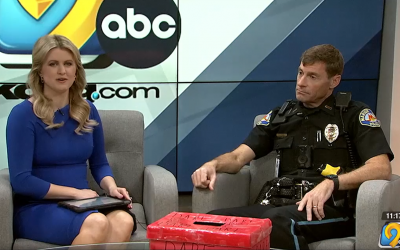Key Addiction Points You Need to Know
Make a difference in the current opioid crisis.
• Adolescents should avoid drug experimentation to prevent problematic changes in their developing brains.
• The U.S. concentrates on reversing opioid drug overdosages, but other strategies are necessary.
• Drugs like opioids target the brain’s pleasure system, causing brain changes.
Substance use disorder (SUD) is the nation’s most pressing public health challenge, and the most urgent SUD in 2024 is opioid abuse and dependency. According to the CDC, more than one million people have died since 1999 from drug overdose. In 2022, nearly 74,000 people in the U.S. died from fentanyl overdose, more than double the deaths in 2019.
From necessity, opioid crisis policy in the United States has focused on reversing overdose deaths rather than treating individuals with opioid use disorder (OUD). This approach has created a revolving door of overdose-rescue-treatment-overdose. Narcan-naloxone, an antidote to opioid overdose I used in the 1970s, still saves lives today, yet overall, U.S. life expectancy is decreasing because of opioid deaths.
The Opioid Crisis
We are in the third phase of the opioid crisis, which began with the epidemic abuse of Oxycontin. The second phase was a heroin epidemic. The third phase is the fentanyl epidemic.
An unintended consequence of changing from prescription opioids to heroin and fentanyl is most users have no idea of the dosage or purity of their drugs. During the Oxycontin phase, users knew their pill was pure and FDA-approved, and the dosage was imprinted on each pill. Drug dealers today offer counterfeit pills that may contain nothing of what they are sold as, as well as adulterated heroin, cocaine, methamphetamine, and fentanyl, making street use a Russian roulette.
Naloxone Overdose Reversals
Opioid overdoses are reversed when naloxone is administered. However, most overdoses occur outside the hospital when users are home or elsewhere. There is much to gain from giving naloxone to everyone who overdoses. Whether a person or their friends say overdose is due to cocaine, methamphetamine, or another drug is less critical.
Also, after an overdose reversal, individuals who administered naloxone should call 911 because naloxone wears off, longer-acting opioids are still present, and the person can re-overdose.
Addiction and Time
Addiction, especially to opioids, takes time. The longer use continues, the stronger the bond between the user and the drug. Other bonds weaken, such as ties with the person’s family, friends, and colleagues. Over time, free will is compromised, with survival-related priorities losing influence.
The evolving concept of pre-addiction, modeled on pre-diabetes, focuses on identifying and treating problematic users. This means doing something now rather than waiting for overdoses or hitting bottom.
Most Addicts Take Multiple Drugs
Although we often talk about opioids in isolation, drugs are usually abused with other drugs. Treatment of OUD usually means treating multiple medical and psychiatric problems and SUD co-addictions. We have no treatment medications for methamphetamine and cocaine overdoses or medication-assisted treatment (MAT) for them.
Postmortems of opioid overdose patients usually show the deceased person consumed other drugs, cannabis or tobacco, and medications like antidepressants, sleeping pills, or benzodiazepines. Another key point: Most overdoses occur in people with a history of overdoses. This means carrying naloxone and remaining vigilant is important for family and friends.
Support Continued MAT Treatment
MAT only works if patients take their medicine. Most patients drop out of treatment and have about the same risk of overdose as before starting MAT. Sometimes, they stop MAT to prove they are cured when the opposite is true. Keep in mind that slips and relapses may also be caused by untreated psychiatric illness or inability to manage sleep, pain, stress, or drug cravings.
Oddly, some experts suggest if MAT treatment does not work, it is the patient’s fault. They have not hit bottom or should retry the previously failed treatment. Instead, more treatment options are needed, from telehealth to residential treatment. Also, we need to consider some non-responders might represent a new category of OUD, treatment-resistant opioid use disorder (TROUD).
Methadone Is Underused
If important outcome measures are prevention of overdose and retention in long-term treatment, methadone is usually best. An important study released in 2018 of nearly 18,000 adults who survived an opioid overdose revealed overdose deaths decreased 59 percent for those receiving methadone and 38 percent for those receiving buprenorphine over 12 months.
However, methadone is underutilized because the drug is under strict prescriber regulations absent from other FDA-approved OUD medicines. For example, Suboxone, but not methadone, can be prescribed by physicians and nurse practitioners and available by telemedicine. These guidelines make little sense today.
A classic study proved methadone maintenance should be managed like other SUD treatments and combined with counseling and lifestyle changes. Yet many programs have devolved into medication-only drug delivery vehicles.
Addiction May Have Genetic Risks
Genetic risk factors may increase risks for OUD. These allow for the futuristic possibility of identifying genetic test markers linked to personal risks for developing OUD. Eventually, genetic testing may help us understand why some individuals say they were addicted the first time they took an opioid. In contrast, others reportedly used the drug for weeks before the same thing happened to them.
But even when a person has OUD risk genes, keep in mind these risks aren’t destiny and can be modified by the environment. For example, posttraumatic stress disorder (PTSD) makes overdoses more likely, while a higher educational level makes overdoses less likely.
In addition, when in the lifecycle the drug is taken and whether the person is under 18 or has preexisting PTSD, trauma, serious pain, or a psychiatric illness are all significant factors affecting addiction risks.
Drugs Change the Pleasure System
Drugs are abused to elicit artificial pleasure, and over time, these drugs alter the brain’s pleasure system. The identical dose taken intravenously or by smoking does not have the same effects as taken orally or intranasally, and the faster the drug gets to the pleasure system, the more addicting it is. All drugs of abuse can compromise the natural system by repeated use, causing a pleasure deficiency syndrome.
Some people use drugs because they have a psychiatric illness like depression. For others, the drug itself causes chemical changes, making susceptible individuals depressed and hopeless. Fentanyl may have even more severe effects compared with other opioids in producing anhedonia (inability to experience pleasure), depression, despair, and suicidal thinking.
Unsurprisingly, many patients with OUDs are depressed, and some who overdose are suicidal. In a Harvard study of overdose survivors, suicide or suicidal thinking was at the top of their minds when people overdosed.
Yet, as a society, we have taken a bizarre approach to overdoses. We do not track overdoses, reversals, or loss of consciousness caused by drugs in a way that helps patients. Many OUD patients have had so many overdoses, reversals, loss of consciousness, falls, head trauma, and injuries that by the time they are evaluated, they have signs of brain injury. Respiratory depression is a defining characteristic of opioid overdose, and prolonged cerebral hypoxia may cause brain injuries and neurocognitive impairments that need evaluation and treatment, like head injuries in sports medicine.
The Bottom Line
Continued research and outcomes analysis are needed. Applying what we know works while rejecting old ideas that are no longer relevant is best. When we say this is a matter of life and death, we mean it.
References
Connery HS, Weiss RD, Griffin ML, Trinh CD, Kim J, Rockett IRH, McHugh RK. Suicidal motivations among opioid overdose survivors: Replication and extension. Drug Alcohol Depend. 2022 Jun 1;235:109437. doi: 10.1016/j.drugalcdep.2022.109437. Epub 2022 Apr 2. PMID: 35427980; PMCID: PMC9106902
Lee YK, Gold MS, Blum K, Thanos PK, Hanna C, Fuehrlein BS. Opioid use disorder: current trends and potential treatments. Front Public Health. 2024 Jan 25;11:1274719. doi: 10.3389/fpubh.2023.1274719. PMID: 38332941; PMCID: PMC10850316
Mahoney JJ 3rd, Winstanley EL, Castillo F, Luba R, Marton J, Alschuler DM, Liu Y, Comer SD. A pilot study investigating cognitive impairment associated with opioid overdose. Drug Alcohol Depend. 2023 Jun 1;247:109865. doi: 10.1016/j.drugalcdep.2023.109865. Epub 2023 Apr 5. PMID: 37094488; PMCID: PMC10230403
KEY POINTS
• Adolescents should avoid drug experimentation to prevent problematic changes in their developing brains.
• The U.S. concentrates on reversing opioid drug overdosages, but other strategies are necessary.
• Drugs like opioids target the brain’s pleasure system, causing brain changes.
Substance use disorder (SUD) is the nation’s most pressing public health challenge, and the most urgent SUD in 2024 is opioid abuse and dependency. According to the CDC, more than one million people have died since 1999 from drug overdose. In 2022, nearly 74,000 people in the U.S. died from fentanyl overdose, more than double the deaths in 2019.
From necessity, opioid crisis policy in the United States has focused on reversing overdose deaths rather than treating individuals with opioid use disorder (OUD). This approach has created a revolving door of overdose-rescue-treatment-overdose. Narcan-naloxone, an antidote to opioid overdose I used in the 1970s, still saves lives today, yet overall, U.S. life expectancy is decreasing because of opioid deaths.
The Opioid Crisis
We are in the third phase of the opioid crisis, which began with the epidemic abuse of Oxycontin. The second phase was a heroin epidemic. The third phase is the fentanyl epidemic.
An unintended consequence of changing from prescription opioids to heroin and fentanyl is most users have no idea of the dosage or purity of their drugs. During the Oxycontin phase, users knew their pill was pure and FDA-approved, and the dosage was imprinted on each pill. Drug dealers today offer counterfeit pills that may contain nothing of what they are sold as, as well as adulterated heroin, cocaine, methamphetamine, and fentanyl, making street use a Russian roulette.
Naloxone Overdose Reversals
Opioid overdoses are reversed when naloxone is administered. However, most overdoses occur outside the hospital when users are home or elsewhere. There is much to gain from giving naloxone to everyone who overdoses. Whether a person or their friends say overdose is due to cocaine, methamphetamine, or another drug is less critical.
Also, after an overdose reversal, individuals who administered naloxone should call 911 because naloxone wears off, longer-acting opioids are still present, and the person can re-overdose.
Addiction and Time
Addiction, especially to opioids, takes time. The longer use continues, the stronger the bond between the user and the drug. Other bonds weaken, such as ties with the person’s family, friends, and colleagues. Over time, free will is compromised, with survival-related priorities losing influence.
The evolving concept of pre-addiction, modeled on pre-diabetes, focuses on identifying and treating problematic users. This means doing something now rather than waiting for overdoses or hitting bottom.
Most Addicts Take Multiple Drugs
Although we often talk about opioids in isolation, drugs are usually abused with other drugs. Treatment of OUD usually means treating multiple medical and psychiatric problems and SUD co-addictions. We have no treatment medications for methamphetamine and cocaine overdoses or medication-assisted treatment (MAT) for them.
Postmortems of opioid overdose patients usually show the deceased person consumed other drugs, cannabis or tobacco, and medications like antidepressants, sleeping pills, or benzodiazepines. Another key point: Most overdoses occur in people with a history of overdoses. This means carrying naloxone and remaining vigilant is important for family and friends.
Support Continued MAT Treatment
MAT only works if patients take their medicine. Most patients drop out of treatment and have about the same risk of overdose as before starting MAT. Sometimes, they stop MAT to prove they are cured when the opposite is true. Keep in mind that slips and relapses may also be caused by untreated psychiatric illness or inability to manage sleep, pain, stress, or drug cravings.
Oddly, some experts suggest if MAT treatment does not work, it is the patient’s fault. They have not hit bottom or should retry the previously failed treatment. Instead, more treatment options are needed, from telehealth to residential treatment. Also, we need to consider some non-responders might represent a new category of OUD, treatment-resistant opioid use disorder (TROUD).
Methadone Is Underused
If important outcome measures are prevention of overdose and retention in long-term treatment, methadone is usually best. An important study released in 2018 of nearly 18,000 adults who survived an opioid overdose revealed overdose deaths decreased 59 percent for those receiving methadone and 38 percent for those receiving buprenorphine over 12 months.
However, methadone is underutilized because the drug is under strict prescriber regulations absent from other FDA-approved OUD medicines. For example, Suboxone, but not methadone, can be prescribed by physicians and nurse practitioners and available by telemedicine. These guidelines make little sense today.
A classic study proved methadone maintenance should be managed like other SUD treatments and combined with counseling and lifestyle changes. Yet many programs have devolved into medication-only drug delivery vehicles.
Addiction May Have Genetic Risks
Genetic risk factors may increase risks for OUD. These allow for the futuristic possibility of identifying genetic test markers linked to personal risks for developing OUD. Eventually, genetic testing may help us understand why some individuals say they were addicted the first time they took an opioid. In contrast, others reportedly used the drug for weeks before the same thing happened to them.
But even when a person has OUD risk genes, keep in mind these risks aren’t destiny and can be modified by the environment. For example, posttraumatic stress disorder (PTSD) makes overdoses more likely, while a higher educational level makes overdoses less likely.
In addition, when in the lifecycle the drug is taken and whether the person is under 18 or has preexisting PTSD, trauma, serious pain, or a psychiatric illness are all significant factors affecting addiction risks.
Drugs Change the Pleasure System
Drugs are abused to elicit artificial pleasure, and over time, these drugs alter the brain’s pleasure system. The identical dose taken intravenously or by smoking does not have the same effects as taken orally or intranasally, and the faster the drug gets to the pleasure system, the more addicting it is. All drugs of abuse can compromise the natural system by repeated use, causing a pleasure deficiency syndrome.
Some people use drugs because they have a psychiatric illness like depression. For others, the drug itself causes chemical changes, making susceptible individuals depressed and hopeless. Fentanyl may have even more severe effects compared with other opioids in producing anhedonia (inability to experience pleasure), depression, despair, and suicidal thinking.
Unsurprisingly, many patients with OUDs are depressed, and some who overdose are suicidal. In a Harvard study of overdose survivors, suicide or suicidal thinking was at the top of their minds when people overdosed.
Yet, as a society, we have taken a bizarre approach to overdoses. We do not track overdoses, reversals, or loss of consciousness caused by drugs in a way that helps patients. Many OUD patients have had so many overdoses, reversals, loss of consciousness, falls, head trauma, and injuries that by the time they are evaluated, they have signs of brain injury. Respiratory depression is a defining characteristic of opioid overdose, and prolonged cerebral hypoxia may cause brain injuries and neurocognitive impairments that need evaluation and treatment, like head injuries in sports medicine.
The Bottom Line
Continued research and outcomes analysis are needed. Applying what we know works while rejecting old ideas that are no longer relevant is best. When we say this is a matter of life and death, we mean it.
References
Connery HS, Weiss RD, Griffin ML, Trinh CD, Kim J, Rockett IRH, McHugh RK. Suicidal motivations among opioid overdose survivors: Replication and extension. Drug Alcohol Depend. 2022 Jun 1;235:109437. doi: 10.1016/j.drugalcdep.2022.109437. Epub 2022 Apr 2. PMID: 35427980; PMCID: PMC9106902
Lee YK, Gold MS, Blum K, Thanos PK, Hanna C, Fuehrlein BS. Opioid use disorder: current trends and potential treatments. Front Public Health. 2024 Jan 25;11:1274719. doi: 10.3389/fpubh.2023.1274719. PMID: 38332941; PMCID: PMC10850316
Mahoney JJ 3rd, Winstanley EL, Castillo F, Luba R, Marton J, Alschuler DM, Liu Y, Comer SD. A pilot study investigating cognitive impairment associated with opioid overdose. Drug Alcohol Depend. 2023 Jun 1;247:109865. doi: 10.1016/j.drugalcdep.2023.109865. Epub 2023 Apr 5. PMID: 37094488; PMCID: PMC10230403
Here’s what D.A.R.E. is teaching kids about weed
Aside from living through the first iteration of social media and being the final group to understand what an internet dial tone sound is, Millennials were also the first full generation to go through the classic Drug Abuse Resistance Education (D.A.R.E.) program....
Marion police officer talks about D.A.R.E. classes
From KCRG.com: Marion Police Officer Tom Daubs joins KCRG to talk about D.A.R.E. classes
Old Lyme Officer Revives D.A.R.E. Program After Two Decades Hiatus
Officer Stephen Hackett of the Old Lyme Police Department is set to become the town’s first Drug Abuse Resistance Education (D.A.R.E.) instructor in over two decades. With a new focus on skill-building, the updated D.A.R.E. program aims to empower the town’s youth to make responsible choices.
Mental Health Stigma: Life or Death
The pervasive stigma against people with addictions, particularly opioid use disorder (OUD), is a major problem requiring urgent attention in the United States. Stigma is likely at least part of the reason why only 1 in 5 individuals with opioid dependence receives…
Former YAB Member and D.A.R.E. Scholarship Awardee Julia Manning is now a Police Officer for the Park Ridge Police Department
Julia Manning was an active member of the YAB (Youth Advisory Board) from 2016 to 2019, and she is now proud to be an alumni of the program. In recognition of her outstanding achievements, she was honored with the prestigious 2019 D.A.R.E. America Louis 'Skip' Miller...
150-Plus Students Graduate Russell D.A.R.E. Program
Russell Elementary students graduated from the D.A.R.E. program at Russell-McDowell Intermediate School on Monday. About 153 fifth-grade students — all wearing white shirts that read “keep kids off drugs” — filled the gymnasium early afternoon Monday to be recognized...
Students Graduate from D.A.R.E. Program at Mary Queen of Peace
Four classes at Mary Queen of Peace in Mount Pearl have graduated from the RNC’s Drug Abuse Resistance Education program. The ten-week series of classroom lessons, led by an RNC officer to grade six students, teaches children how to live productive drug-free and...
Hundreds of Students Graduate from MPD’s D.A.R.E. Program
MEMPHIS, Tenn. — Memphis Police celebrated with hundreds of local students as they graduated from the D.A.R.E. program Wednesday. For 40 years, D.A.R.E. has been teaching children about the dangers of high-risk situations with alcohol, drugs, and bullying. MPD…
D.A.R.E. Makes a Comeback in Chino Schools
The drug abuse resistance program D.A.R.E. has returned to Chino elementary schools after 20 years, with a focus on healthy decision-making skills and self-advocacy. Approximately 900 fifth-grade students in the Chino Valley Unified School District are participating…










